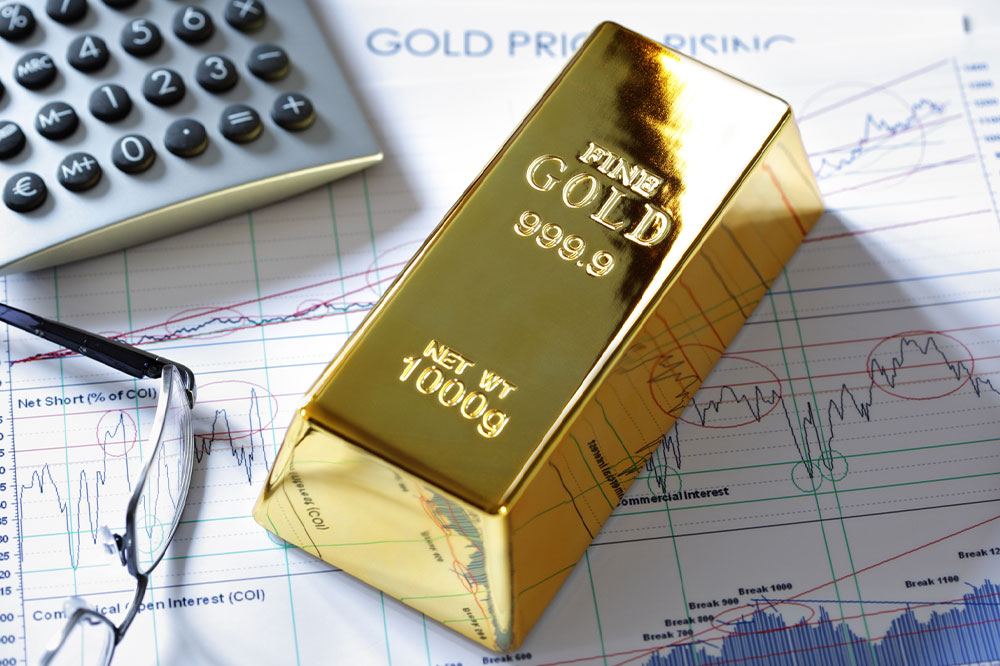Pros and Cons of Investing in Gold and Silver

Although stocks and bonds are convenient investment avenues, they’re risky. Hence, many diversify their portfolio by also investing in precious metals like gold and silver. You don’t need to own these metals physically to invest in them because there are other secure and more liquid ways to do so. Here, we’ll discuss the pros and cons of investing in gold and silver. But first, let’s understand the differences between these metals and how to invest.
Differentiating features of gold and silver
A study by the World Silver Survey showed that almost half of the world’s silver supply is utilized in heavy industries and advanced technology like cell phones and solar panel cells. Because of a higher demand across major industries, silver is more likely to be impacted by the ups and downs of global economic fluctuations. This also makes it more volatile in price changes than gold.
Gold has lesser uses than silver in industries and, hence, isn’t as impacted by economic fluctuations as other metals. This means its price remains relatively stable. Silver typically has a lower price per ounce than gold, making it more affordable for retail investors interested in owning precious metals as physical assets.
How to invest in gold and silver?
You can invest in gold and silver in various ways. Here are three popular options:
- Physical form
You can buy these metals physically as bullion or rare coins. However, you may have to pay extra for storage and insurance in this case. - Exchange-traded funds (ETFs)
An alternative way to own gold and silver is to buy ETFs. In this method, the precious metals are traded electronically, so you cannot access them. While you save on storage and insurance, you may have to pay handling costs to an ETF operator responsible for holding the physical supply of gold and silver. The ETFs of precious metals are considered collectibles and taxed accordingly. - Mining stocks and funds
You can also invest in the companies that mine and polish these precious metals by purchasing their shares. This is an indirect way of investing in gold and silver. Owning shares of these companies is relatively easy, and you may also be eligible to receive dividends, unlike in the case of physical metals. That said, the stock prices and returns may be subject to the company’s performance and profit.
Pros of investing in gold and silver
The following are four advantages of investing in these precious metals:
- Potential inflation hedge
Gold can act as a potential hedge against inflation since the latter reduces the purchasing power of cash. At times, rising inflation can also hike the price of gold, which can be an incentive for investors to sell and earn a profit. Investing in gold may be a helpful strategy if you’re looking to plan ahead for economic uncertainty, as gold prices may rise during such periods. Falling real interest rates can also lead to rising gold prices. - Diversification
Diversification means investing in different assets like stocks, bonds, and commodities. It’s a good strategy to minimize risks, maximize returns, reduce exposure to market volatility, and make gains from different markets and sectors. Some prefer investing in both gold and silver when diversifying their portfolio. - Holds its value over a period of time
Unlike cryptocurrencies or fiat currencies that lack intrinsic value, the value of precious metals, especially gold, is derived from being a physical commodity. So, even if the price of metal drops, its underlying value does not diminish. Additionally, gold has been shown to perform relatively well even during stock market volatility and economic recessions. This makes it a hit among investors who view the metal as a safe asset that can mitigate the effects of market downturns. - One knows exactly what one owns
Owning precious metals, especially in physical or tangible form, is like owning any other commodity. You know exactly how much it is worth. In contrast, the cost of other financial assets is based more on future expectations.
Cons of investing in gold and silver
Investing in these metals may also have a few drawbacks:
- Difficult to store
Holding high-value metals like gold and silver in physical form can be risky. Since they can be stolen, they must be stored and guarded correctly. While banks do offer storage facilities or deposit boxes, they come with a fee. The transaction cost, transportation fees, insurance premiums, and certification also add to the cost of ownership. Trading stocks and bonds is easier as it doesn’t entail these extra costs. - Liquidity
Another issue with owning physical assets is the lack of liquidity. You cannot sell gold or silver immediately if you need cash, nor can you buy groceries or a new house with these metals. This drawback doesn’t apply to ETFs, as they have better liquidity than physical assets. However, completing the transaction and receiving the amount in your bank may still take a few days. - The metal’s condition affects its value
When buying bullion, bars, or minted and rare coins, you pay close to the current spot price of gold. However, the future value of rare metals depends on various factors, including the quantity of gold in each coin, its rarity, age, and condition. - Fear-based decision
Gold is a popular investment option during market downturns. However, this also means that investors have traditionally turned to the metal more as an impulse reaction to the market volatility than a sound financial choice. So, before investing, you must analyze your need for this type of investment and consider various factors, including your long-term goals and risk tolerance.
Knowing the pros and cons of investing in precious metals can help you make an informed decision. If confused, don’t hesitate to consult with a financial expert for advice.